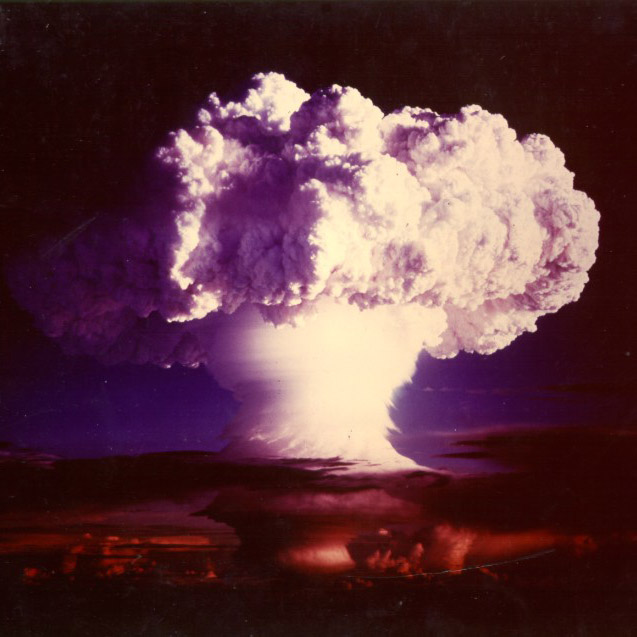Ейнштейній
99
Es
Група
n/a
Період
7
Блок
f
Протони
Електрони
Нейтрони
99
99
153
Загальні Властивості
Атомний номер
99
Атомна маса
[252]
Масове число
252
Категорія
Актиноїди
Колір
n/a
Радіоактивний
Так
Named after Albert Einstein
Кристалічна Структура
n/a
Історія
Einsteinium was discovered as a component of the debris of the first hydrogen bomb explosion in 1952.
It was identified by Albert Ghiorso and co-workers at the University of California, Berkeley in collaboration with the Argonne and Los Alamos National Laboratories, in the fallout from the Ivy Mike nuclear test.
The new element was produced by the nuclear explosion in miniscule amounts by the addition of 15 neutrons to uranium-238.
It was identified by Albert Ghiorso and co-workers at the University of California, Berkeley in collaboration with the Argonne and Los Alamos National Laboratories, in the fallout from the Ivy Mike nuclear test.
The new element was produced by the nuclear explosion in miniscule amounts by the addition of 15 neutrons to uranium-238.
Електронні оболонки
2, 8, 18, 32, 29, 8, 2
Електронна конфігурація
[Rn] 5f11 7s2
Einsteinium is the first divalent metal in the actinide series
Фізичні Властивості
Фаза
Тверде тіло
Густина
8,84 г/см3
Температура плавлення
1133,15 K | 860 °C | 1580 °F
Температура кипіння
-
Теплота плавлення
n/a
Теплота випаровування
n/a
Питома теплоїмність
-
Достаток в земній корі
n/a
Достаток в Всесвіті
n/a

Образ Кредиту: Wikimedia Commons (National Nuclear Security Administration)
Einsteinium was first observed in the fallout from the Ivy Mike nuclear test
Номер CAS
7429-92-7
Номер PubChem CID
n/a
Властивості Атома
Радіус атома
-
Ковалентний радіус
-
Електронегативність
1,3 (Шкала Пауля)
іонізаційний потенціал
6,42 еВ
Молярний об'єм
28,5 см3/моль
Теплопровідність
0,1 Вт/см·К
Ступені окиснення
2, 3
Застосування
Einsteinium is mainly used for scientific research purposes.
The rare isotope einsteinium-254 is favored for production of ultraheavy elements.
Einsteinium-254 was used as the calibration marker in the chemical analysis spectrometer of the Surveyor 5 lunar probe.
The rare isotope einsteinium-254 is favored for production of ultraheavy elements.
Einsteinium-254 was used as the calibration marker in the chemical analysis spectrometer of the Surveyor 5 lunar probe.
Einsteinium is harmful due to its radioactivity
Ізотопи
Стабільні ізотопи
-Нестабільні ізотопи
240Es, 241Es, 242Es, 243Es, 244Es, 245Es, 246Es, 247Es, 248Es, 249Es, 250Es, 251Es, 252Es, 253Es, 254Es, 255Es, 256Es, 257Es, 258Es